Three kilometers of coastline – that's all these six women want to protect.
For the past three years, 57-year-old Wang Lianhua and five of her fellow villagers, with an average age of over 55 among them, have been collecting garbage twice a week on the village's beach on southern China's Hainan Island, gathering over 60 tonnes of waste.
"Let's go, sisters! Gloves, bags, bamboo poles, scales...make sure you have everything." With that, this cheerful group of women crossed the street early in the morning when most people were still asleep and came to the beach. They chatted and laughed through the trip.
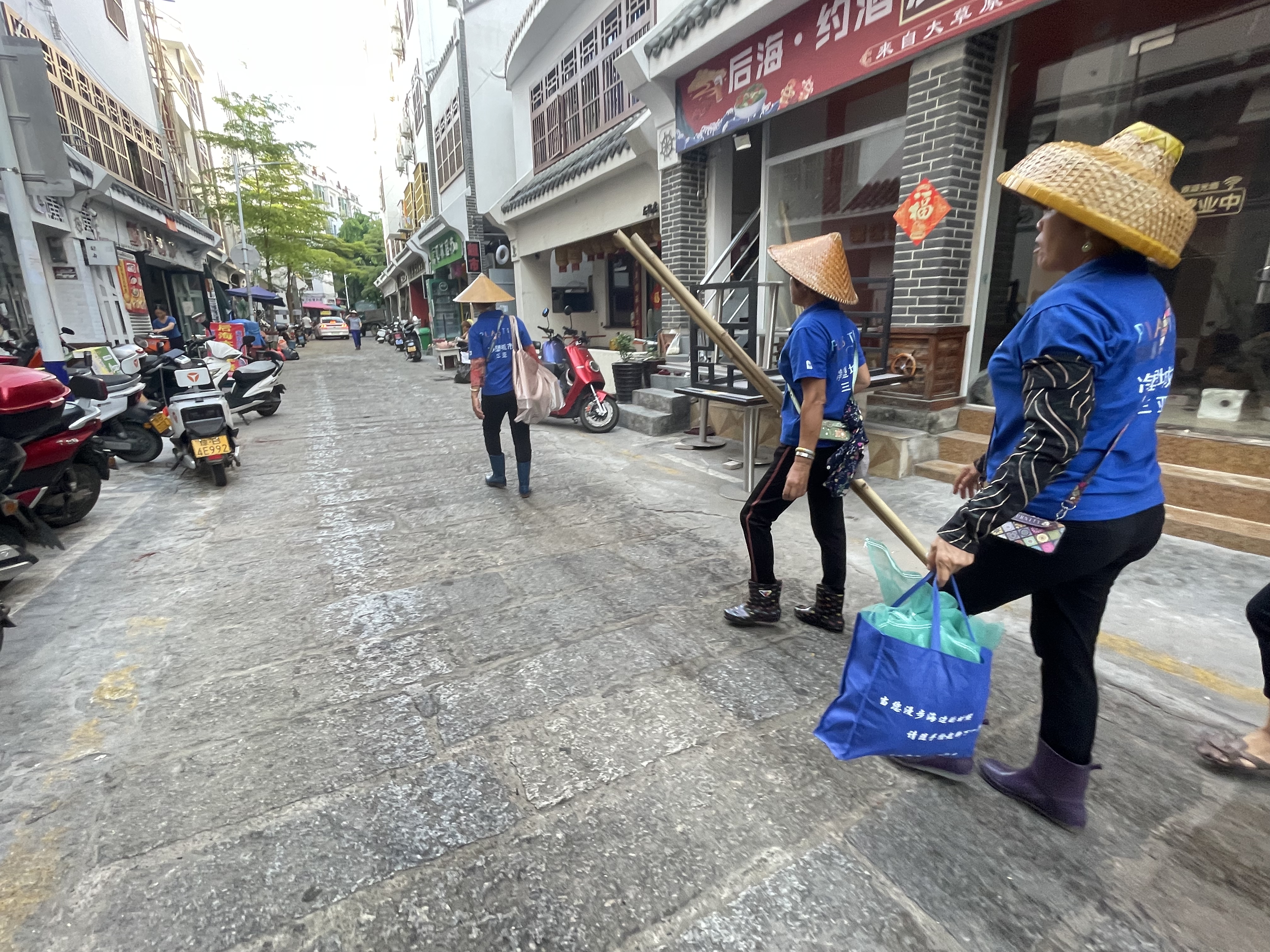
Wang Lianhua, other volunteers, set out to collect garbage on the beach of Houhai Village, Sanya City, Hainan Island, south China. /Blue Ribbon
Wang Lianhua, other volunteers, set out to collect garbage on the beach of Houhai Village, Sanya City, Hainan Island, south China. /Blue Ribbon
Fishing nets buried in the sand, littered plastic bottles and bags, dead fish and shrimps – they dug out each item carefully, half-kneeling, and put them in their bags.
Yang Yajiao watched closely. When she saw a piece of glass, she scouted the area, making sure no pieces were left. "It's nothing if we are hurt. We are just worried about the children running on the beach with bear feet. What would happen to them?" Yang said.
A typical mission day ended with this team transporting the garbage back to the the recycling station, classifying, weighing and registering.
On some days, it takes less than one hour, but on others, the garbage is so heavy, weighing over 150 kg, that it takes two team members to work together to carry it back.
"We just cannot leave the garbage on the beach," Zheng Wumei said.

Volunteers collecting garbage on beach of Houhai Village, Sanya City, Hainan Island, south China. /Blue Ribbon
Volunteers collecting garbage on beach of Houhai Village, Sanya City, Hainan Island, south China. /Blue Ribbon

Volunteer showing garbage on the beach of Houhai Village, Sanya City, Hainan Island, south China. /Blue Ribbon
Volunteer showing garbage on the beach of Houhai Village, Sanya City, Hainan Island, south China. /Blue Ribbon
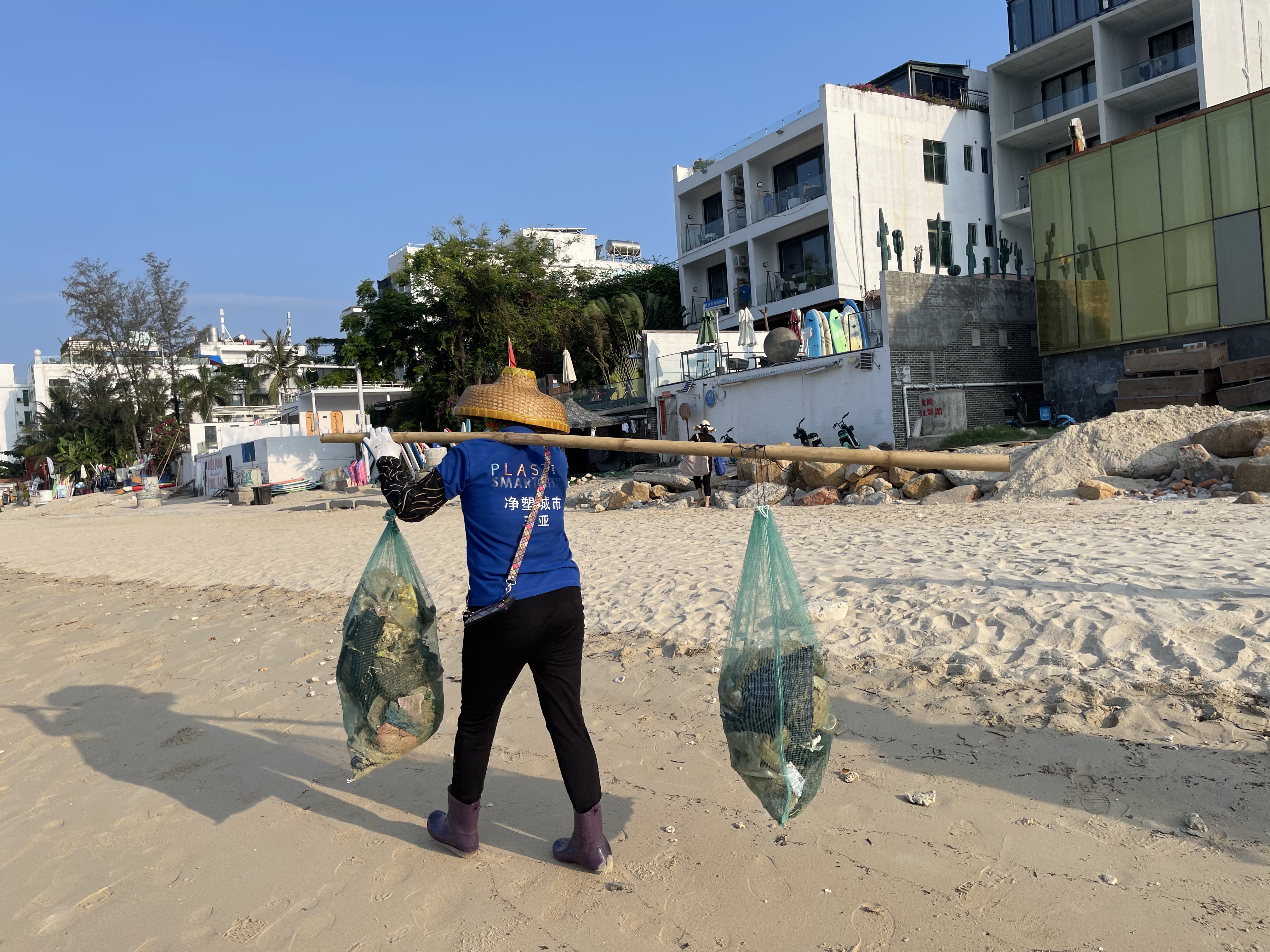
Volunteer carrying garbage on a bamboo pole on the beach of Houhai Village, Sanya City, Hainan Island, south China. /Blue Ribbon
Volunteer carrying garbage on a bamboo pole on the beach of Houhai Village, Sanya City, Hainan Island, south China. /Blue Ribbon
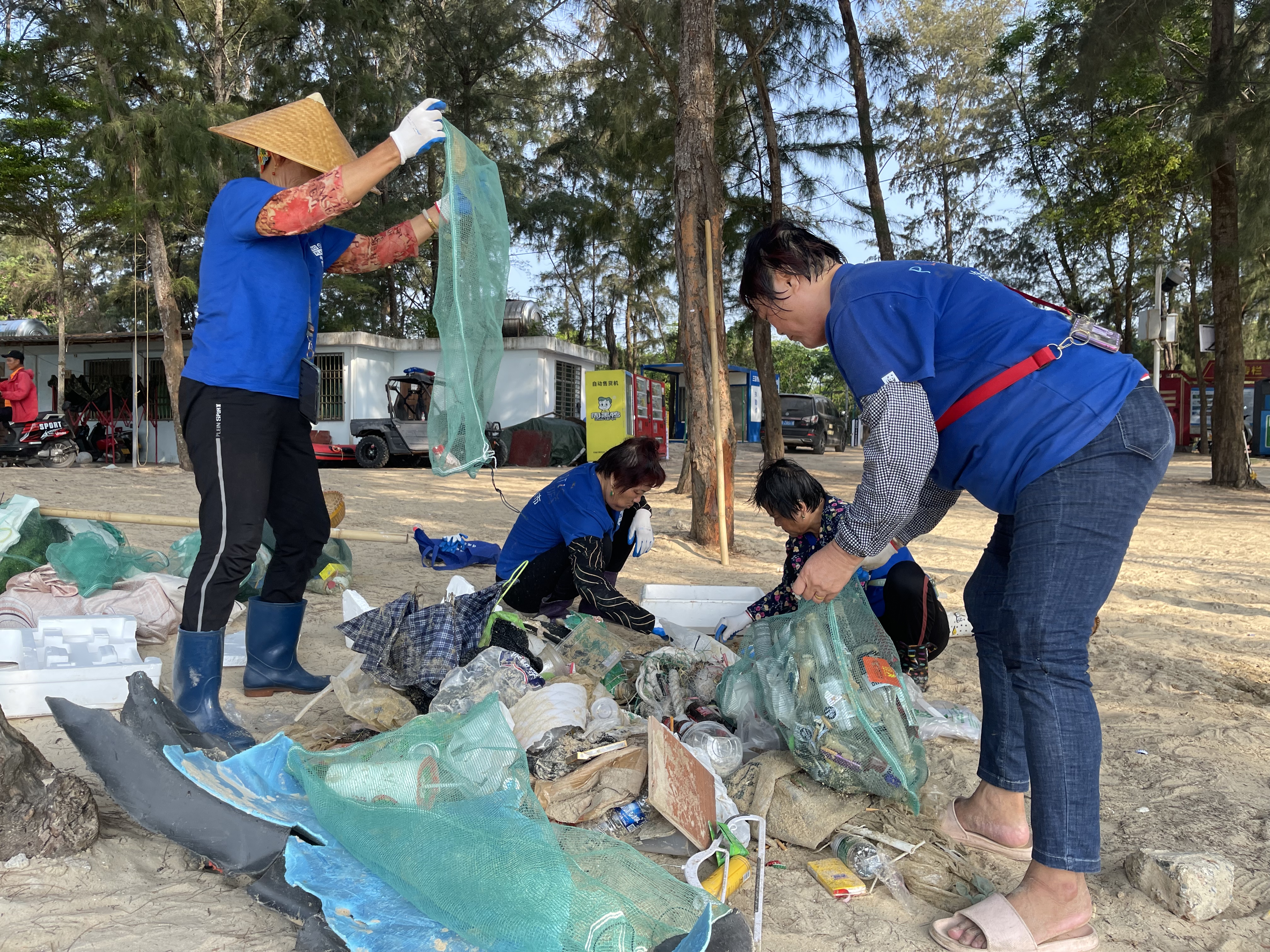
Volunteers collecting garbage on the beach of Houhai Village, Sanya City, Hainan Island, south China. /Blue Ribbon
Volunteers collecting garbage on the beach of Houhai Village, Sanya City, Hainan Island, south China. /Blue Ribbon
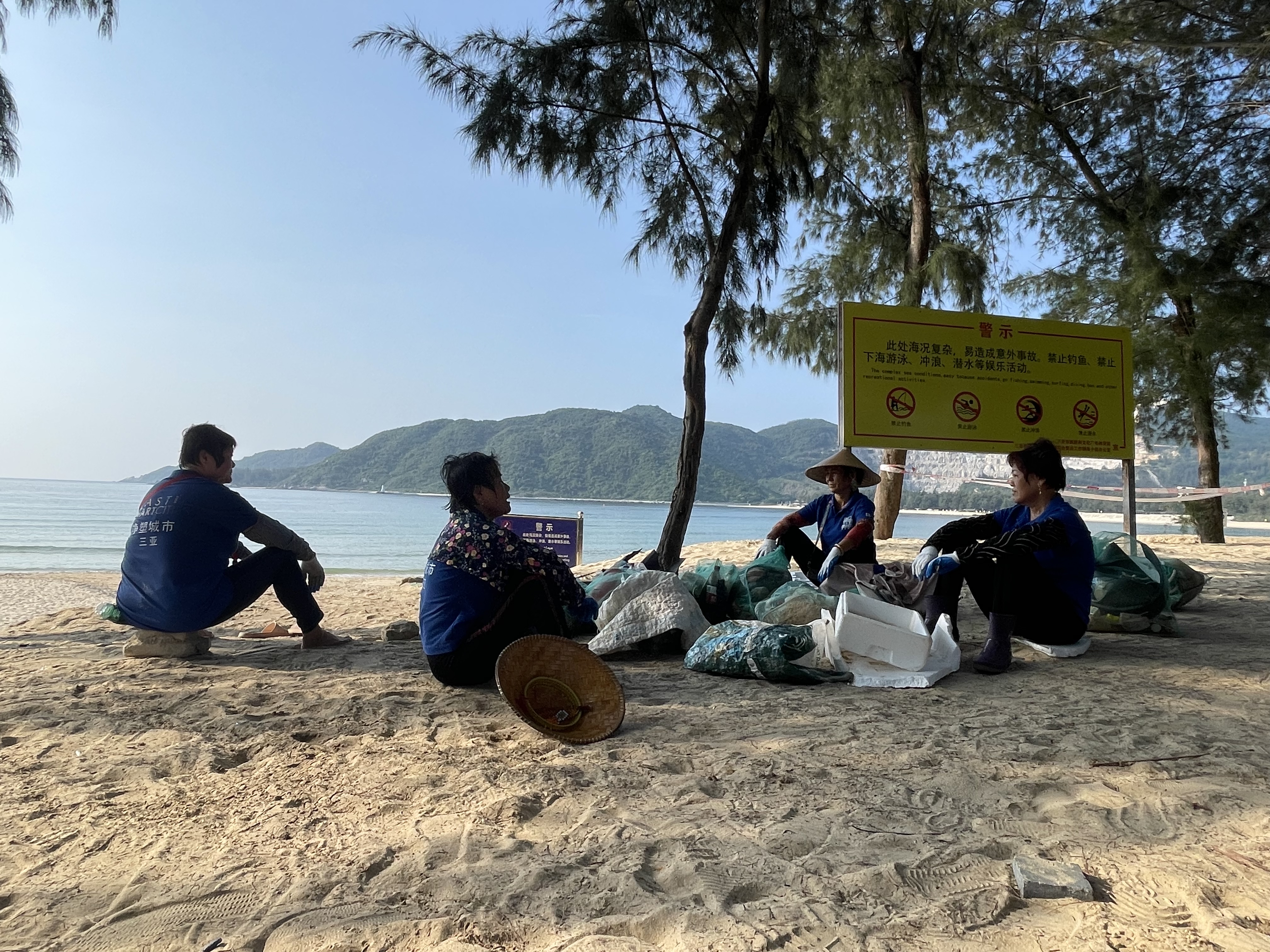
Volunteers collecting garbage on the beach of Houhai Village, Sanya City, Hainan Island, south China. /Blue Ribbon
Volunteers collecting garbage on the beach of Houhai Village, Sanya City, Hainan Island, south China. /Blue Ribbon
Behind these women's determination to safeguard their coast is this small fishing village's struggle against plastic pollution fueled by its tourism boom.
Houhai Village, located in the popular tourist destination city of Sanya, has grown to be one of the top surfing bases in the country. The tropical climate and clean ocean water draw in surfing enthusiasts from around the world. In fact, reports say that about one-fifth of all the country's surfing clubs are based in this village with a population of about 2,800.
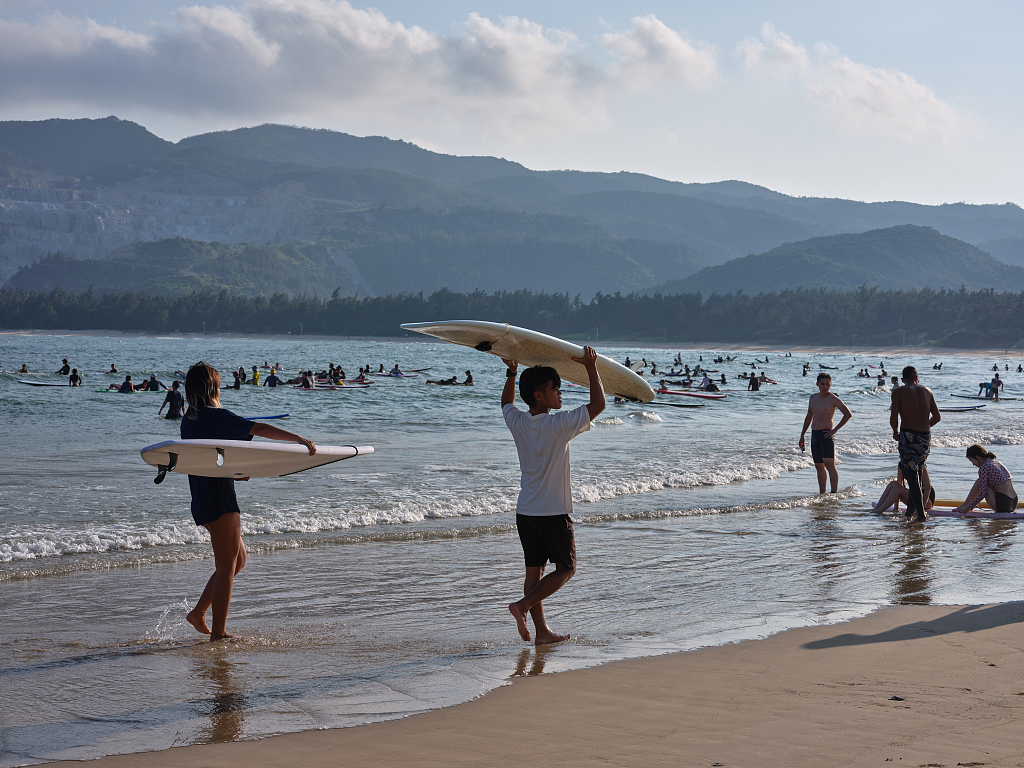
Tourists surfing in Houhai Village, Sanya City, Hainan Island, south China. /VCG
Tourists surfing in Houhai Village, Sanya City, Hainan Island, south China. /VCG
Tourists come and go, leaving behind the traces of civilization.
"Plastic bags, corn cobs, wooden sticks, glass bottles, fruit peels, wrapping paper, cigarette butts, clothes, rubber, fishing nets...all sorts of stuff," Wang Lianhua said.
But the villagers stay. Most of them have lived all their lives by the beach, and the ocean is such a big part of their lives.
"We spend most of our lives here, and the ocean is our company," Wang said.
She still remembered how heartbreaking it was to witness the changes happening to what used to be this little, tranquil fishing village.
"I saw some tourists' comments on the Internet, all saying there was so much garbage in our village, and I felt very upset," she recalled.
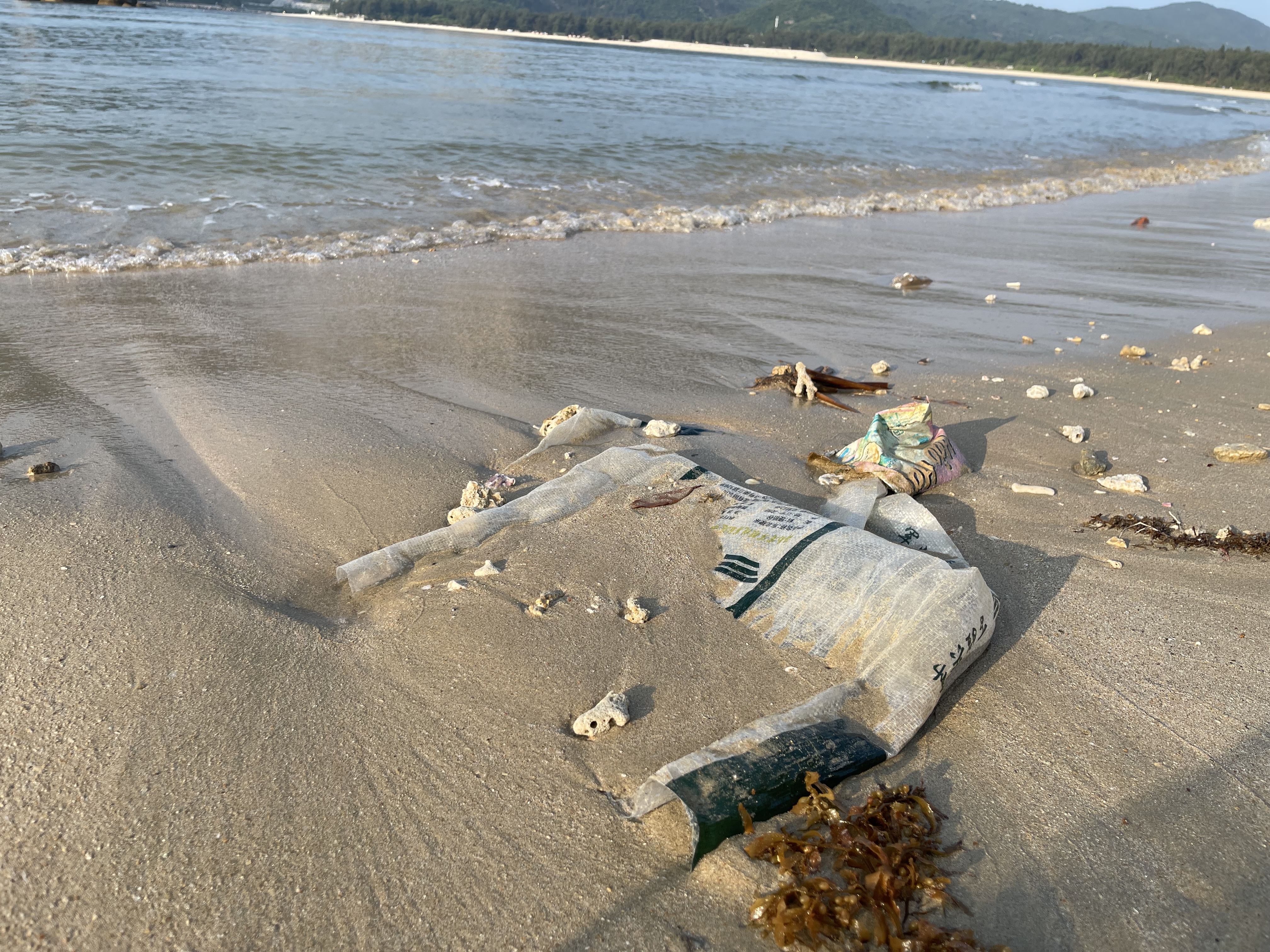
Plastic bags, other garbage on the beach of Houhai Village, Sanya City, Hainan Island, south China. /Blue Ribbon
Plastic bags, other garbage on the beach of Houhai Village, Sanya City, Hainan Island, south China. /Blue Ribbon
Beach-loving tourists come and leave, scattering all kinds of waste on the sand, and new tourists come, complaining about what they see and leaving yet more trash before they go. This vicious cycle damages both the environment and the reputation of the village. Moreover, if the garbage is left unattended, it will be washed away by the waves and end up in the ocean, hurting the lives of numerous marine species.
Wang felt she had to do something for the ocean. But how?
Things started to change in 2020. In March of that year, Sanya City officially joined the World Wildlife Fund's Plastic Smart Cities initiative, aimed at bringing cities and tourist destinations together to commit to fighting plastic pollution. The city started to act. The NGO Blue Ribbon teamed with local communities and launched a volunteer program, organizing people to clean the beaches.
Wang finally found her way of making changes.
Since then, Wang and her teammates have been patrolling the 3-km coastline of the village, collecting garbage at least twice a week for about three hours each time.
"We are not tired. We chat and laugh, and time flies," Wang said.
Other people started to join them, including villagers, students, tourists, guesthouse owners and other business owners. A guesthouse reserves a special space for volunteers to organize public activities to make more people aware of plastic pollution.
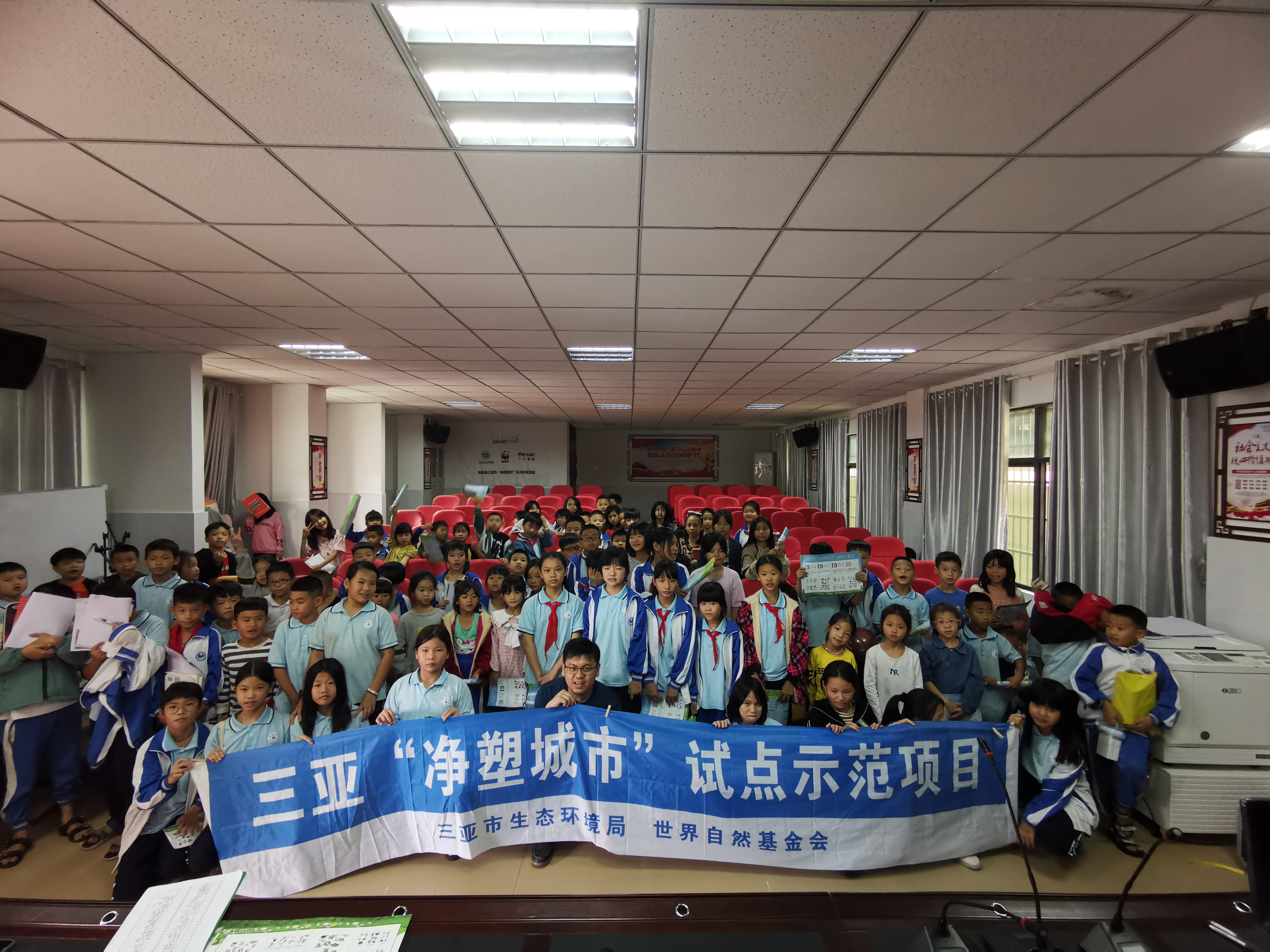
Student volunteers in Sanya's Plastic Smart Cities initiative. /Blue Ribbon
Student volunteers in Sanya's Plastic Smart Cities initiative. /Blue Ribbon
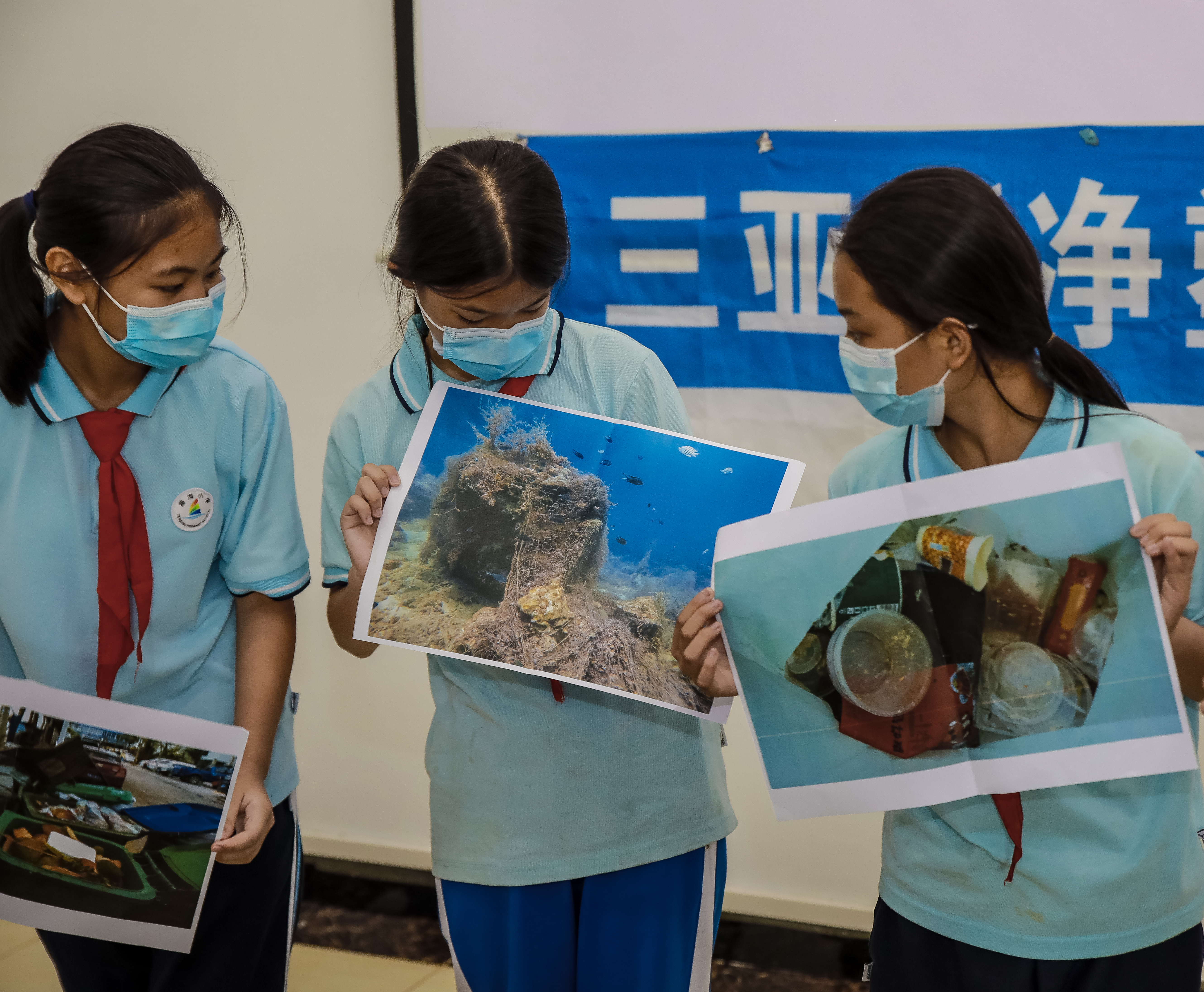
Student volunteers presenting pictures depicting plastic pollution in the ocean. /Blue Ribbon
Student volunteers presenting pictures depicting plastic pollution in the ocean. /Blue Ribbon
According to Pu Bingmei, secretary general of Blue Ribbon, these women's influence goes far beyond Sanya.
"Without their work and the data they provide, which lay the foundation, our work will just be like a 'castle in the air.' Regular cleaning and data monitoring of a specific beach helps us understand the situation of marine garbage and analyze the cause so as to prevent more garbage from entering the ocean. It could also provide references to government policy," Pu said.
Pu's organization, together with other NGOs and government departments, is grouping beach-cleaning volunteers as well as divers in Sanya to remove garbage from both the coastline and under the sea. They are also monitoring plastics along China's coastlines in a bid to contribute to the government's policy-making in the nation's campaign against plastic pollution.
Three kilometers of coastline – that's all the six women want to protect.
But the coastline is lined up one kilometer after another. If each kilometer is protected, that will build a defense line for the health of our oceans and the entire planet.
(If you want to contribute and have specific expertise, please contact us at nature@cgtn.com.)